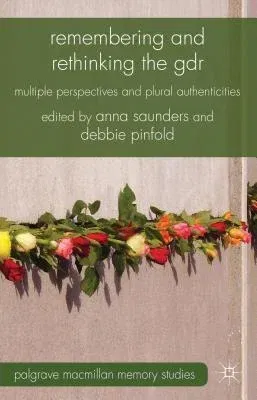Remembering and Rethinking the GDR: Multiple Perspectives and Plural Authenticities (2013)Hardcover - 2013, 15 December 2012

Qty
1
Turbo
Ships in 2 - 3 days
In Stock
Free Delivery
Cash on Delivery
15 Days
Free Returns
Secure Checkout

Part of Series
Palgrave MacMillan Memory Studies
Print Length
253 pages
Language
English
Publisher
Palgrave MacMillan
Date Published
15 Dec 2012
ISBN-10
0230360572
ISBN-13
9780230360570
Description
Product Details
Book Edition:
2013
Book Format:
Hardcover
Country of Origin:
US
Date Published:
15 December 2012
Dimensions:
22.1 x
14.22 x
2.29 cm
ISBN-10:
0230360572
ISBN-13:
9780230360570
Language:
English
Location:
London
Pages:
253
Publisher:
Weight:
498.95 gm